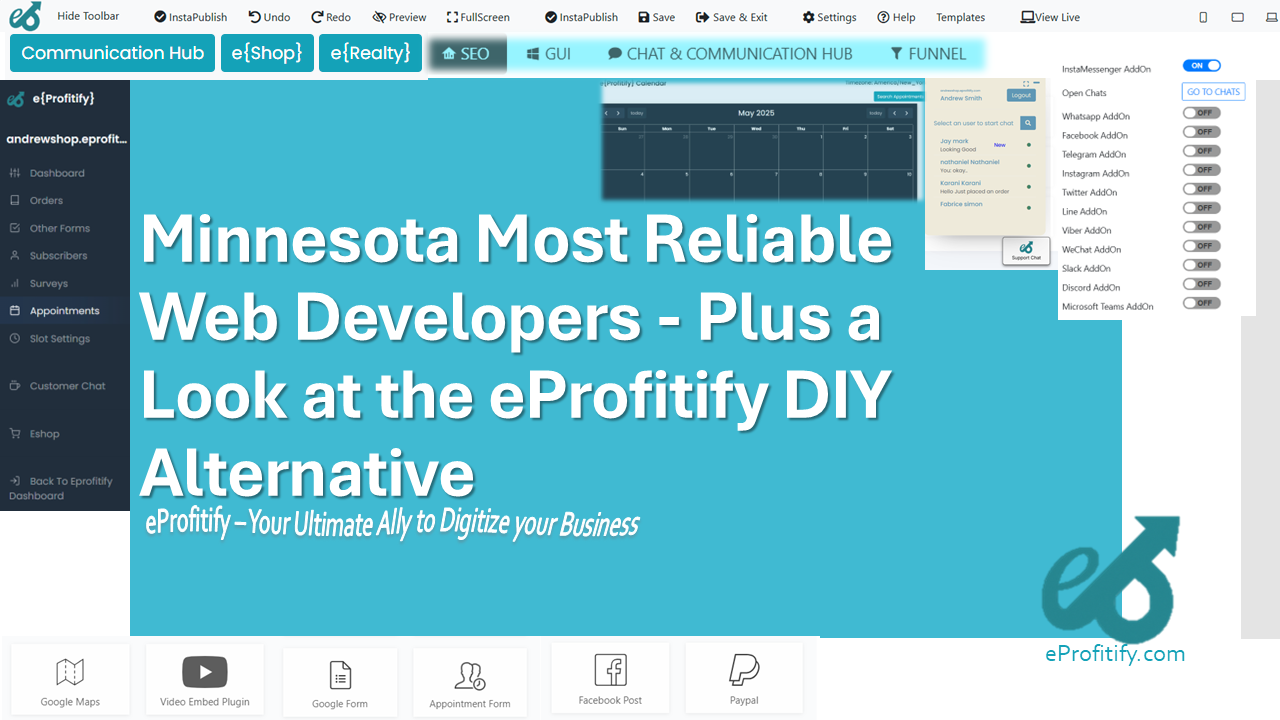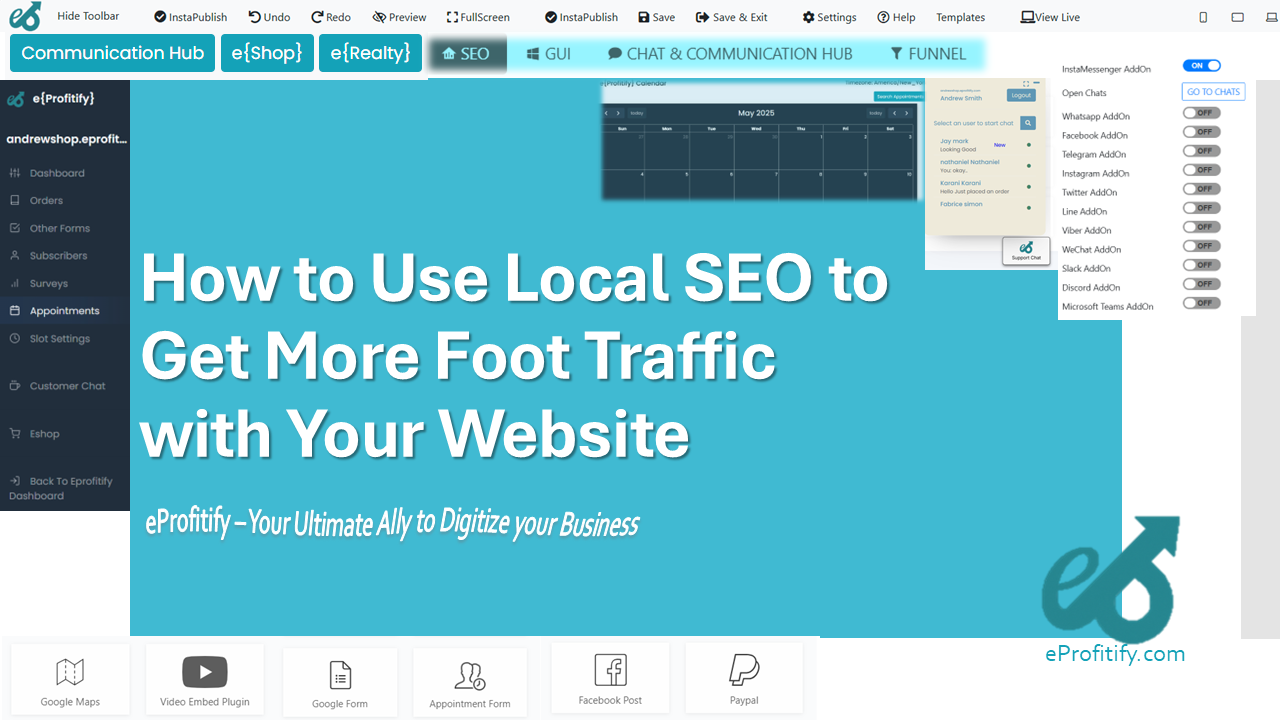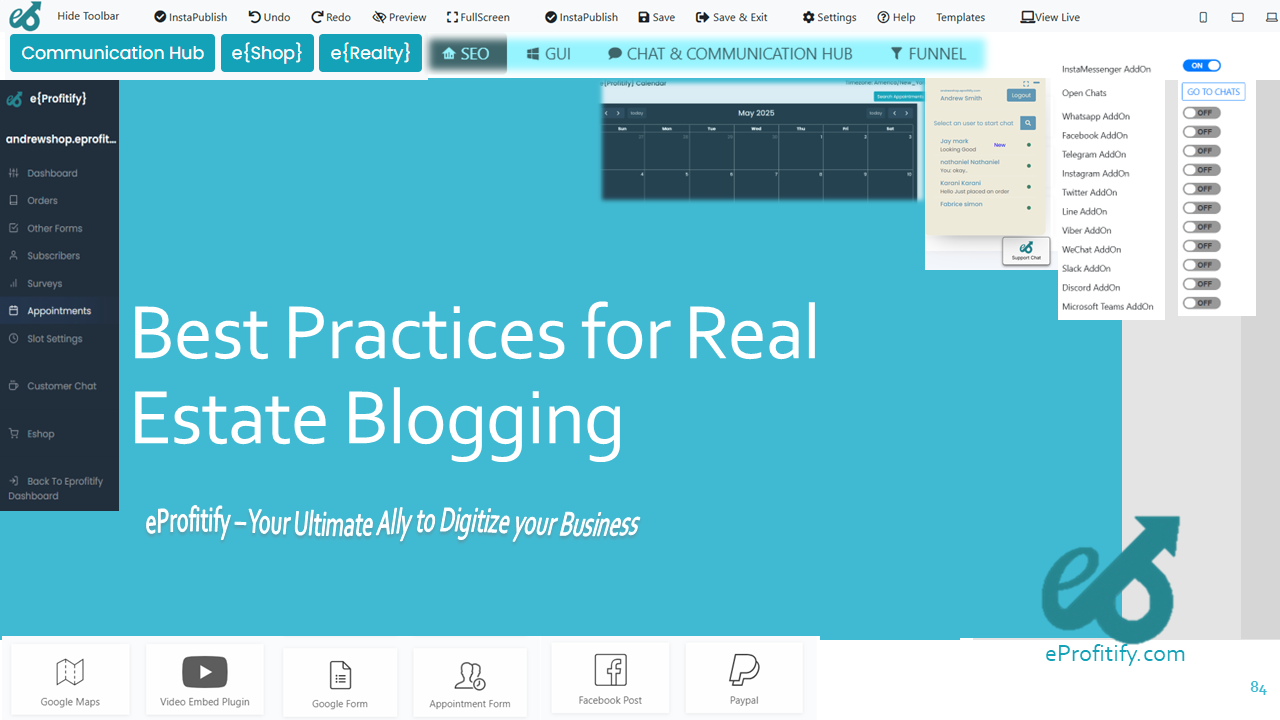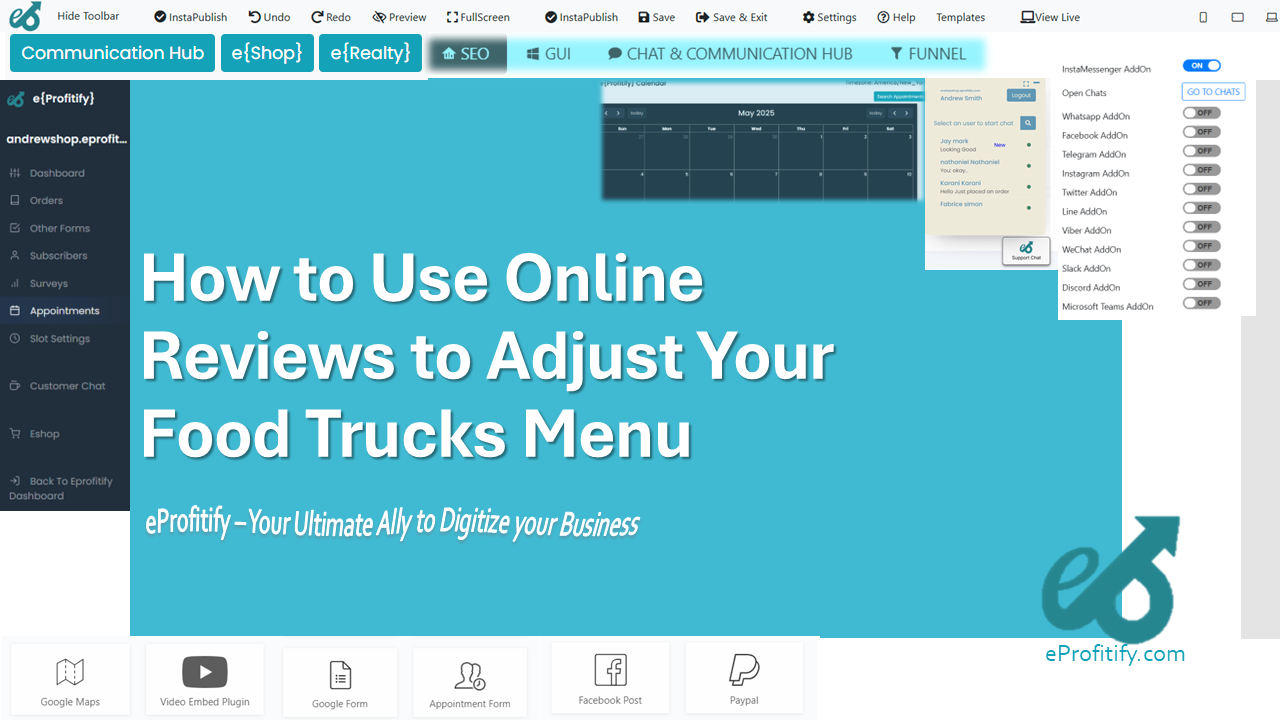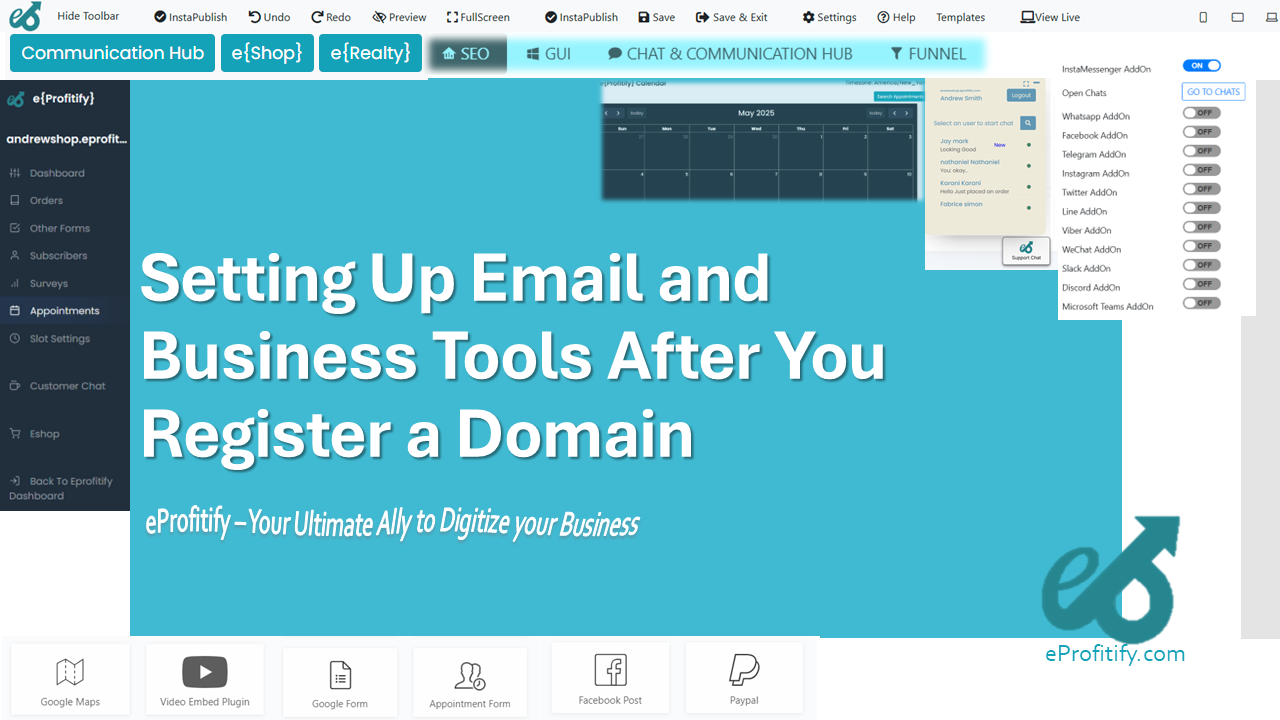SEO for Podcasts and Audio Content
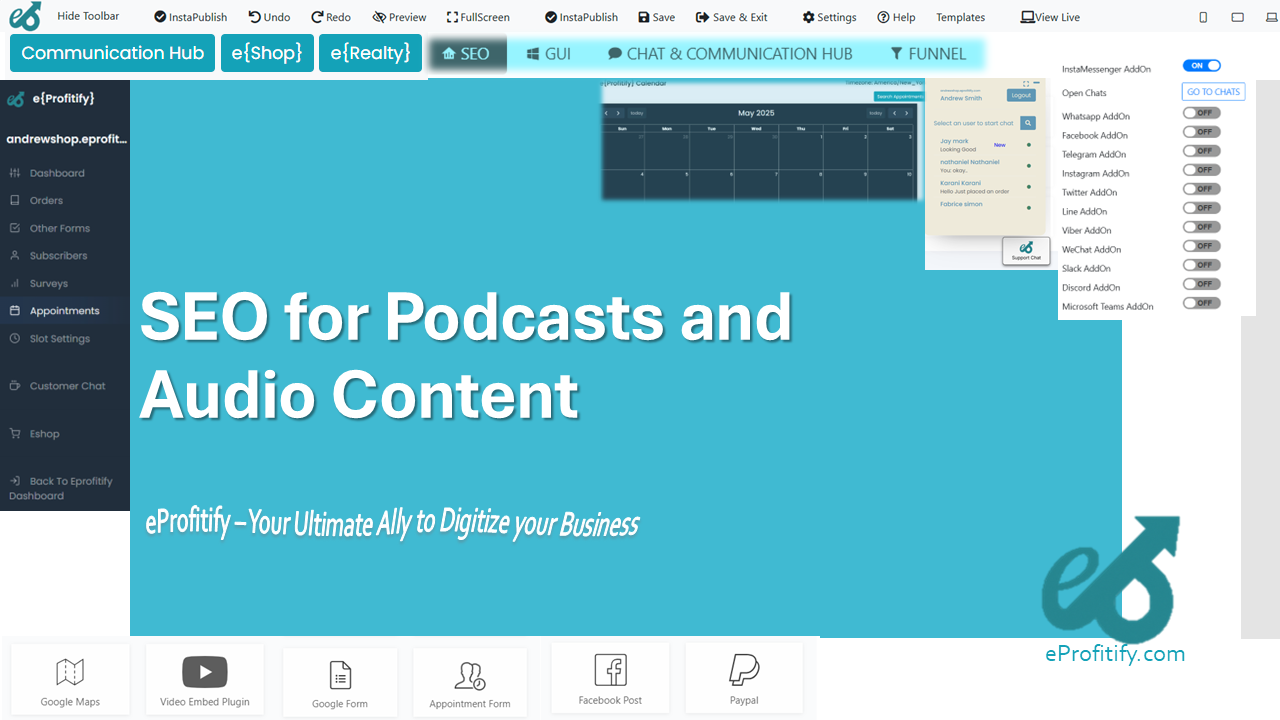
Schedule a LIVE Zoom call with an eProfitify Expert.
SEO for Podcasts and Audio Content: Strategies and Statistics
Podcasts and audio content have surged in popularity over the last decade, creating a competitive landscape where discoverability is critical. Search Engine Optimization (SEO) for podcasts ensures your content reaches its target audience, driving engagement and growth. With 464.7 million global podcast listeners in 2023 (Statista) and 42% of Americans aged 12+ tuning in monthly (Edison Research), optimizing audio content for search is non-negotiable.
The Importance of SEO for Podcasts
Unlike traditional web content, podcasts rely on metadata, directories, and user behavior metrics to rank. A study by Nielsen revealed that 66% of podcast listeners search for new shows based on keywords, topics, or recommendations. Without SEO, even high-quality audio content risks obscurity.
On-Page SEO Strategies
-
Keyword Research:
Identify long-tail keywords (e.g., "best productivity podcasts for entrepreneurs") using tools like Google Keyword Planner or Ahrefs. Apple Podcasts and Spotify’s search algorithms prioritize titles, descriptions, and categories containing relevant terms. -
Optimized Titles:
Titles should be concise and keyword-rich. For example, "Marketing Trends 2023" could become "Top Digital Marketing Trends 2023: Expert Insights." Podcasts with keyword-rich titles see 25% higher click-through rates (Buzzsprout). -
Transcripts and Show Notes:
Transcribing episodes boosts SEO by 30% (Backlinko), as search engines crawl text-based content. Include timestamps, guest bios, and links to resources. Platforms like Rev or Otter.ai automate transcriptions. -
Metadata Optimization:
Fill out podcast ID3 tags (title, author, description) and select precise categories (e.g., "Tech News" instead of "Technology"). This improves visibility on platforms like Google Podcasts and Apple Podcasts.
Off-Page SEO and Distribution
-
Submit to Directories:
Distribute your podcast to platforms like Spotify, Apple Podcasts, and Google Podcasts, which collectively host 85% of all podcast listens (Podcast Insights). Niche platforms like Pocket Casts or Overcast can also drive targeted traffic. -
Backlinks and Social Sharing:
Collaborate with industry blogs to embed your episodes. Podcasts promoted via blogs or YouTube generate 50% more downloads (Libsyn). Share clips on social media with hashtags (e.g., #FintechPodcast) to amplify reach. -
Leverage Reviews and Ratings:
Encourage listeners to leave reviews. Podcasts with 100+ reviews on Apple Podcasts rank 40% higher in search results (Podcast Marketing Institute).
Technical SEO for Audio Content
-
Schema Markup:
Use Podcast Schema markup to help search engines understand your content. This enhances visibility in Google’s "Podcasts" carousel and voice search results. -
Hosting and Loading Speed:
Choose a reliable hosting platform with fast loading times. Slow websites embedding audio players experience 53% higher bounce rates (Google). -
Mobile Optimization:
74% of podcast listeners use mobile devices (Edison Research). Ensure your website and embedded players are responsive.
The Role of eProfitify in Podcast SEO
Integrating tools like eProfitify streamlines SEO and content management. As a leading website publishing platform, eProfitify offers:
- Instant Messaging: Engage listeners in real-time via chatbots, improving user experience and dwell time.
- Appointment Management: Schedule interviews or promotional activities seamlessly.
- Ecommerce Integration: Sell merchandise or premium content directly from your podcast site.
- CRM Tools: Track listener behavior, segment audiences, and personalize marketing campaigns.
For example, eProfitify’s analytics dashboard identifies high-performing episodes, enabling data-driven SEO adjustments. Its built-in SEO toolkits automate metadata optimization, while CRM features help nurture leads from casual listeners to loyal subscribers.
Measuring Success
Monitor metrics like downloads, average listen duration, and website traffic. Podcasts retaining 80%+ of listeners beyond the first 5 minutes rank higher algorithmically (Podcorn). Tools like Chartable or Podtrac provide granular insights.
Conclusion
SEO for podcasts demands a blend of keyword optimization, technical adjustments, and strategic distribution. With the industry projected to grow at a CAGR of 27.6% (Grand View Research), leveraging tools like eProfitify empowers creators to focus on content quality while automating SEO, marketing, and audience engagement.



